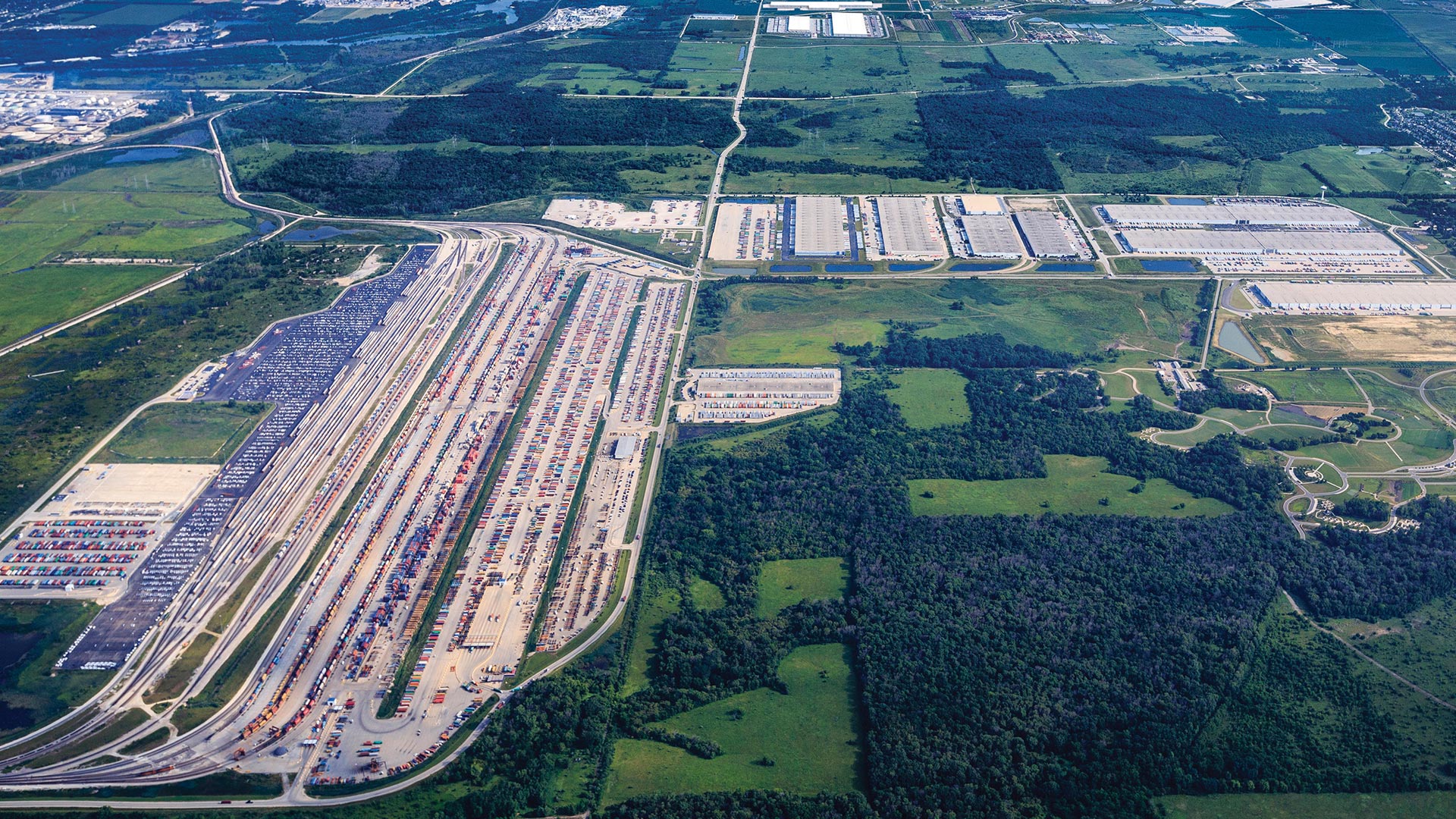Search Site
Back to Menu

Industrial Real Estate 2020
Key Takeaways
- Massive: Pressures from e-commerce and larger shipping vessels are encouraging distribution centers to expand.
- Urban: As same-day (and even next-hour) delivery becomes more common, the demand for urban warehouses will grow, serving as crucial last stops for repackaging before final delivery.
- Networked: Even as major warehouses combine to form mammoth facilities, medium and smaller-sized distribution centers will continue to play an important role in supply chains.
- Intermodal: Faced with increasing transportation expenses due to the ongoing truck driver shortage, retailers and distributors are turning to intermodal transportation as a source of cost savings.
Upsizing to Match Demand
E-commerce continues to grow explosively, increasing 14.6 percent between 2014 and 2015 to $341.7 billion in the U.S.1 This logistical shift has pushed organizations to look beyond brick-and-mortar retail outlets and develop alternative methods to get products to customers. As a result of this ongoing adjustment, it has become essential for retailers and third-party logistics firms to develop flexible delivery capabilities and consolidate facilities to improve efficiency. The impact of distribution center consolidation has been dramatic; in 2011 only one of Amazon’s global warehouses occupied more than 969,000 SF; today 10 surpass this footage.2 Once a rarity, the Million square foot (SF) warehouse is quickly becoming the staple of a strategic omnichannel distribution network.
Micro Distribution Centers
Even as organizations break ground on colossal warehouses, these large facilities must be supplemented by last-mile distribution centers in or near major population centers. True last-mile properties are a rarity today, representing the forefront of distribution innovation. In some ways, these facilities follow a divergent paradigm compared to their larger counterparts. Mega distribution centers have made strides toward automating product movement internally (i.e., adopting sophisticated lifts and inventory tracking systems), but last-mile facilities benefit from their low-tech processes, manual sorting, smaller spaces and numerous locations.
Tiered Distribution
Distribution centers of the future will place much more emphasis on supporting other facilities in the supply chain. In the past, brick-and-mortar stores were the end points of almost all supply chains, but e-commerce has changed the game. Supply chains have adapted, but many facilities are not yet optimized to balance the remixing and distribution needs of retail stores with those of individual customers.
Poorly located facilities are one of the most obvious growing pains organizations contend with while adjusting to the influx of e-commerce. The existing distribution centers and extended truck routes that once serviced retailers easily, now struggle to accommodate individual customers efficiently. To preserve capacity, modern warehouses that exist along distribution spokes must be planned and outfitted with immediate rail access, along with a large number of dock and drive-in doors.
Intermodal Prioritization
Modern distribution hubs must support a multiplying number of destinations, including other distribution centers, brick-and-mortar stores and customers. Between oil price fluctuations, a driver labor shortage and poor infrastructure upkeep, trucking is increasingly unreliable as a primary means of transport. Facing political budgetary gridlock and an average trucking age of 55, retailers and distributors can’t afford to wait for solutions.3 As the benefits of diversified transportation options become obvious, more firms will choose to mirror the decisions of firms including FedEx, Walmart and The Home Depot, and locate warehouses within intermodal complexes.4
By locating distribution centers near intermodal assets, organizations can reduce the time and expense involved with moving product while fluidly integrating rail, truck and maritime operations. Though trucking will continue to hold a virtual monopoly on last-mile delivery, rail presents the opportunity to move large volumes at a fraction of the cost and environmental impact.
Intensifying pressure for organizations to make the leap to true omnichannel logistics, modernize their warehouse capabilities, and reducing time-to-market, is defining the shape of future distribution centers. As organizations move toward a more connected, efficient future, their supply chains – and the industrial properties that comprise them – will inevitably transform.
Sources
Subscribe
Microsite Request
